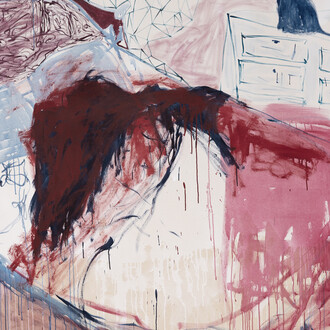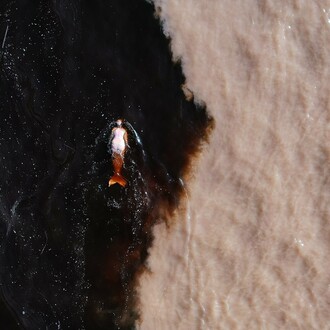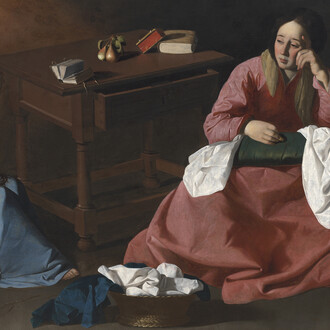Looking at Michaela’s work, you are left with a sense of boundless possibility.
(Curator Ekow Eshun)
Through paintings, sculpture, site-specific murals and installations, Michaela Yearwood-Dan endeavors to build spaces of community, abundance and joy. Yearwood-Dan’s debut exhibition with Hauser & Wirth takes place in London, featuring new paintings ranging from monumental to intimate in scale, including an expansive 11m-long panelled landscape painting, alongside richly adorned ceramic sculptures and benches. Through these multiple mediums, Yearwood-Dan explores the quieter tones of femininity and queer community guided by deep intuition.
The lyrical quality of the paintings will be complemented by a new immersive sound piece made in collaboration with the composer Alex Gruz, a reflection on the analogous experience of art and music alike, setting the tone with which to view the paintings. The title of the show, No time for despair, is a call to action to find joy and connect in times of darkness, referencing an article written by Toni Morrison for The nation, which states, ‘In times of dread, artists must never choose to remain silent.’
Yearwood-Dan’s unique visual language draws on a diverse range of influences, including Blackness, queerness, femininity and healing rituals. Lush and brightly hued, the work is at once personal and political. She often engages colors and materials for their symbolic associations, such as ceramic petals collaged into her recent paintings, as seen in Fxxk the opinions and all the logistics (2025), that evoke the queer histories of carnations and pansies. The surfaces of her canvases are dense with generous and purposeful swathes of lavish pigments, as well as textures and embellishments using subversive and non-traditional materials such as gold leaf, crystals, sequins and glitter.
Language intertwines with botanical motifs throughout the works, where abstract habitats not only teem with hints of plant life but also inscribed lines of text from song lyrics, poetry or her own diaristic writings. Her words, in works such as We’ll be free (someday) (2025), beckon the viewer into a vivid, welcoming world of paradox, play and contemplation formed within an atmosphere of swirling forms and brilliant chromaticity. A monumental five-panelled landscape work acts almost as a mural, a vista into another world, and is in dialogue with large-scale paintings and a collection of bonus tracks or ‘B-Sides’, jewel-like, intimate versions of their larger counterparts.
In recent years, Yearwood-Dan’s practice has expanded to include sculpture, extending her visual vocabulary. The exhibition features joyful ceramic sculptures on purpose-built plinths as well as two benches crafted in wood that are partially painted and adorned with ceramics that pour with plant-life. The use of furniture introduces ideas around domesticity, encouraging the viewer to move around and sit with each work, whilst also bringing in elements of nature, shaping the experience of surrounding space and atmosphere.
Similarly, the use of ceramics introduces a dialogue between materiality and form, an opportunity for the artist to reappropriate a medium which is typically considered ‘feminine’. Yearwood-Dan is also drawn to the unpredictable nature of clay, a medium that is beholden to the laws of gravity, balance, evaporation and tension, in contrast with the malleability of paint.
Moving freely between media and resisting any singular definition of identity, the artist explores the possibilities of creating spaces—physical, pastoral, metaphorical—that allow for unlimited and unbounded ways of being.
















